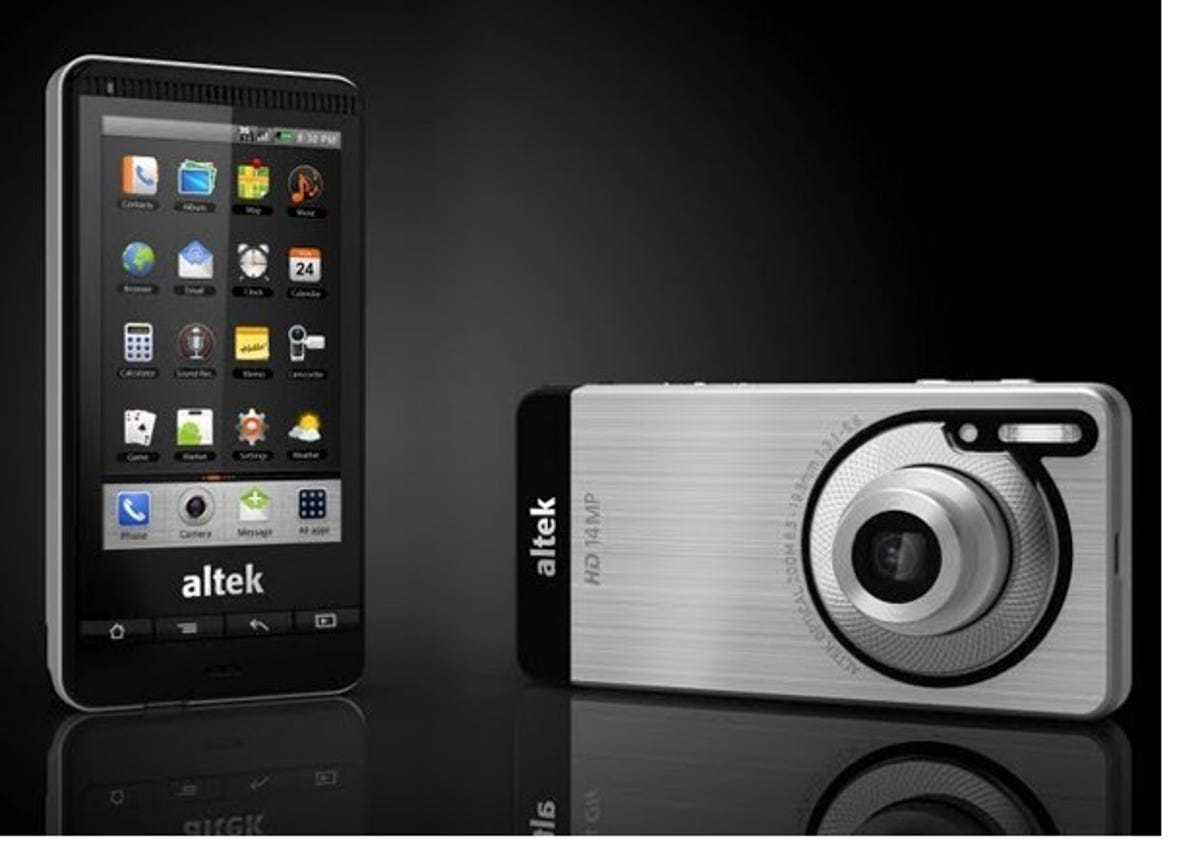
The world’s first Android smart phone with an HD-capable 14-megapixel camera is set for a European debut early next year. Incredibly, the Altek Leo has a 3x optical zoom lens and can shoot 720p video.
It runs Android 2.1 — not the latest version — has a 3.2-inch multi-touch display, and connects to stuff with Wi-Fi, 3G and Bluetooth. It also has a built-in GPS, accelerometer and digital compass. You can also expand the memory up to 32GB using the microSD card.
The Leo has features such as smile and blink-detection technology, and allows you to edit before transferring the photos to a computer. Like the Panasonic Lumix phone we were teased with last week, this is a smart phone with photography very much in mind. The 14-megapixel resolution of the Altek Leo trumps both the Lumix and the 12-megapixel Nokia N8, which was shipped last week.
You’d be forgiven for not being familiar with Altek, which is a Taiwanese company that focuses on digital cameras. The popularity of smart phones persuaded the firm that it would pay to create high-end camera phones with its high-resolution optical zoom lenses, according to Android Authority. The Leo certainly has impressive specs and might make an attractive option for part-time photographers, especially if it runs Android well.
It’s not the first phone to use optical zoom — Samsung has notably made phones that look just like its cameras — but as far as we can recall it’s the first to be headed for Europe.
“The challenge facing Altek’s design team was how to integrate a fully functioning 14-megapixel camera with 3x optical lens while maintaining Leo’s smart phone form factor,” said JS Liang, Altek vice president and head of R&D. “An optical lens requires precision moving parts and mechanisms that ensure the device functions properly, but it also has to be attractive and easy to use. We achieved this without compromising Leo’s look and feel.”
That remains to be seen, old chap. We hope to test his bold claims early next year. Would you replace your camera with a smart phones like this? Or does the heavy-duty camera technology just make it all too bulky?
Image credit: Engadget



